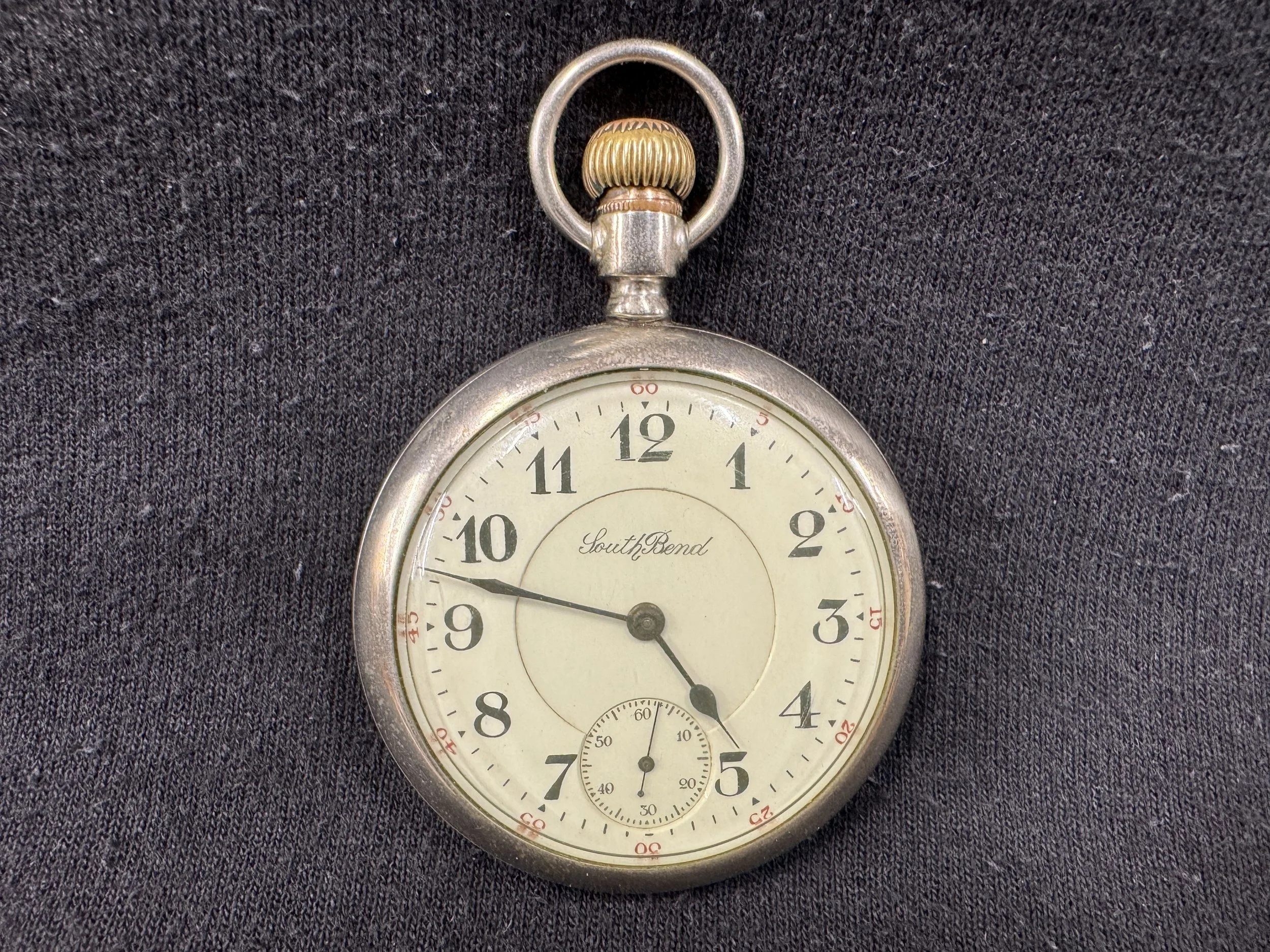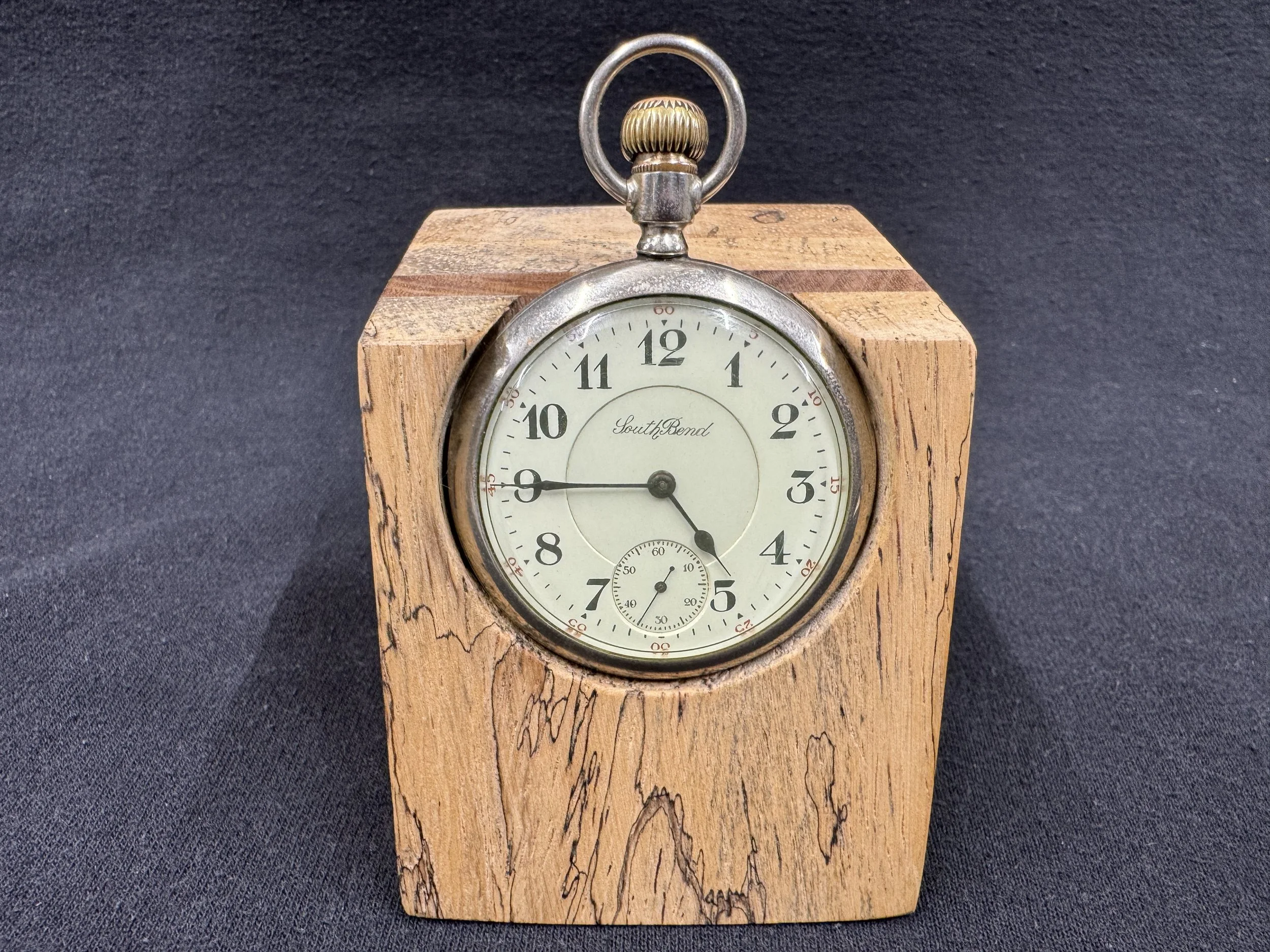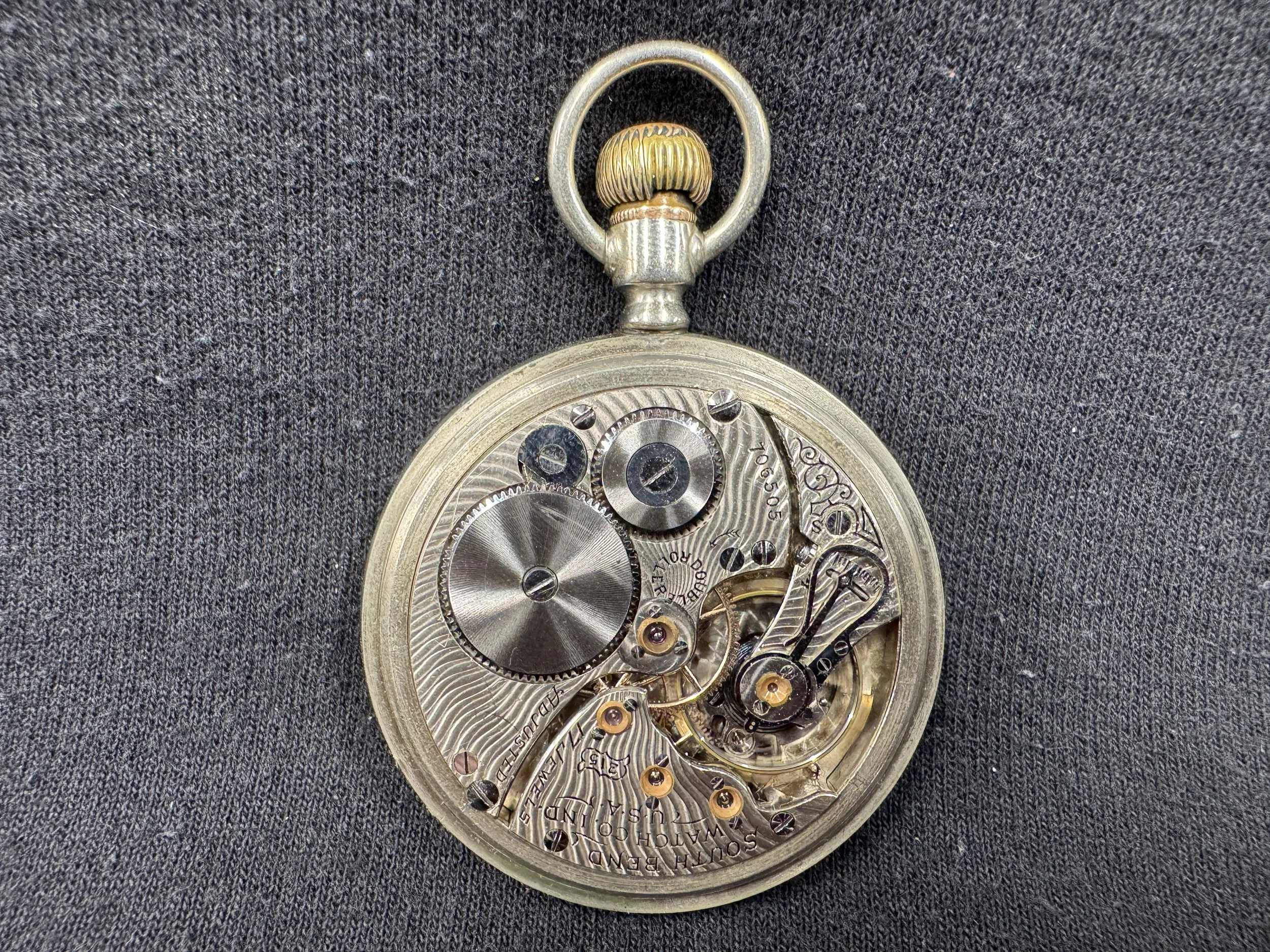South Bend Size 16s Model 2 Openface Pocket Watch
I’ve been unable to determine if this watch originally belonged to Ferdinand Bals or William Bals. I have very few old family photos and none of them contain the watch.
It’s plausible that it was a gift from Ferdinand and Henrietta to William as a coming of age/milestone gift, or as a practical tool for school and/or work.
It’s equally as plausible that either one of them bought it for himself. The production year was 1911, but I have no records of when it was actually purchased.
Ferdinand Bals [Great Great Grandfather]
7 October 1856 - 16 February 1937 [Age 55 at time of production]
William Ferdinand Bals [Great Grandfather]
19 September 1897 – 18 August 1967 [Age 14 at time of production]
Factors to consider:
Pocket watches could be expensive
Wristwatches were becoming more common
Movement
Manufacturer: South Bend
Manufacturer Location: South Bend, Indiana
Movement Serial Number: 706505
Grade: 215
Model: 2
Estimated Production Year: 1911
Run Quantity: 1000
Grade/Model Run: 9 of 20
Total Production: 20,000
Size: 16s
Jewels: 17j
Movement Configuration: Openface
Movement Finish: Nickel
Movement Setting: Pendant
Plate: ¾ Plate
Double Roller: Yes
Regulator: Micrometric
Standard Dial Type: Double-Sunk
Adjusted: Yes
Adjusted Position: No
Adjusted to Temperature: Yes
Adjusted to Isochronism: Yes
Railroad Grade: No
Case: Various
Case
Manufacturer: Fahys Watch Case Company
Serial Number – 6635004
Database ID: PWDB-625
Case Grade: Silvaloy
Material: Nickel Alloy
Introduced: c.1905
Note: Manufactured by Fahys Watch Case Company for South Bend. "All Silvaloy Cases Plain Polished"
My Testimony:
I grew up seeing the watch sitting atop my Grandfather’s [Elmer Bals] desk under a display dome. At some point in the 1990s, the watch was passed to my Father [Larry Bales] who then placed it atop his roll top desk under the same dome. I took possession of the watch in 2022.
My Father didn’t recall a time when the watch actually worked. I decided to try having the watch repaired, and after searching for several weeks, I found Caruso Jewelers in Braintree, MA, who had a working relationship with a clocksmith in Boston. It turns out clocksmithing is a dying art - not many Artisans continue the specialized craft and as time goes on parts aren’t available, so they have to be fabricated.
The mechanical failure was a broken balance staff. It either broke over time or someone forcefully overwound the watch. Since the watch had to be almost fully disassembled for the repair, the recommendation was to perform a full overhaul as there was some rust buildup. Total cost parts and labor was $420.
I display it above my desk, but the dome has been replaced with a custom wooden stand so that it can easily admired and wound. I was told that the worst thing you can do is put them in a drawer and let them stop indefinitely, as that will lead to them seizing up over time.
After a few months, I noticed the watch would lose between upwards of 9 minutes within 24 hours. I took it back to Ken at Caruso, and he in turn sent it back to Boston for calibration. The clocksmith worked on the watch for several months but couldn’t get it to run true for more than 3 days. I was given the choice of letting them keep working on it or getting it back as is with a full refund. I suggested a partial refund since I bought a non-working watch, and they did get it running and cleaned up, but Ken insisted that they had insurance policies for a reason and I had been extremely patient and understanding with the entire process.
The watch loses a few minutes each day, but at 113 years old, it runs and looks cool.
Caruso Jewlers | 1000 Washington St., South Braintree Square, Braintree, MA – 781.843.1638 | http://www.carusojewelers.com





